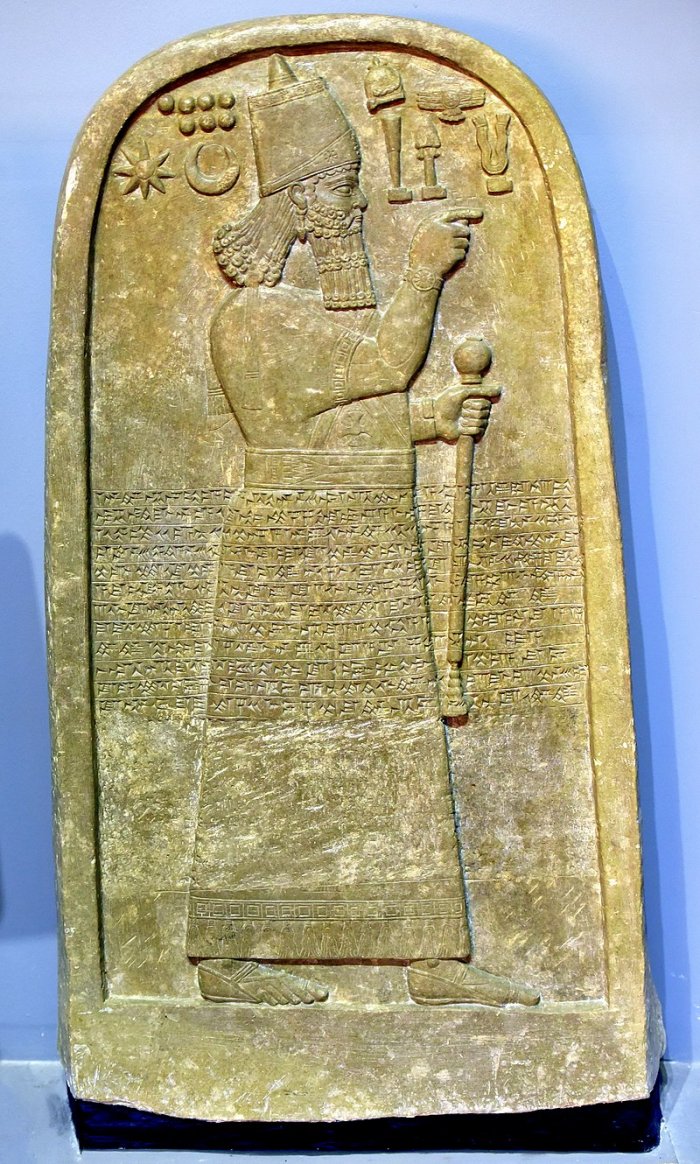Stele Of Tell al-Rimah And Deeds Of Assyrian King Adad-nirari Against Rebellious Kings
A. Sutherland - AncientPages.com - Stele of Tell al-Rimah, dated to 796 BC, is a stone stela from the reign of the Assyrian king Adad-nigari III (810-783 BC) found in 1967 during archaeological excavations at the site of Tell al-Rimah in Nineveh Province, in northern Iraq near Jebel Sinjar.
Stele of Adad-nirari III at the Iraq Museum. Image credit: Osama Shukir Muhammed Amin FRCP (Glasg) - CC BY-SA 4.0
Based on general information, during the reign of Shamshi-Adad V, Shalmaneser III's successor, Assyria's influence in the West significantly waned, and the next monarch, Adad-Nirari III, reversed this trend with solid military campaigns.
It is seen in the Tel al-Rimah stele, which also depicts an image of the king with the inscription carved across his waist and religious symbols placed above him. Though the part of the inscription naming Nergal-fresh was erased after his downfall, it is still clear enough to read.
Made of a single slab of hard grey Mosul marble, the stele was found inside the cella of a small Neo-Assyrian temple beside the podium.
The discovered artifact is in an excellent state of preservation and completion. Its size is 130 cm (height) and 69 cm (width at the base). The stele's front side depicts King Adad-nirari III surrounded by divine symbols.
The lower part has an additional inscription of 21 lines of text. Part of the text (9 lines) was probably deliberately removed in antiquity.
The writing covering the skirt of the king's figure is slightly less than life-size. No traces of paint were visible on the stele when it was unearthed.
In the same shrine, archaeologists also discovered two pairs of lion heads made of softer and lighter limestone, used as column bases.
Adad-nirari, a son and successor of King Shamshi-Adad V, was very young at the time of his accession because his mother, Queen Shammuramat, was highly influential for the first five years of his reign.
Some have identified his mother with the mythical Semiramis from Greek myths; however, many historians confirm the existence of Assyrian queen Shammuramat, wife of Shamshi-Adad V of Assyria and mother of Adad-nirari.
The text on the stele begins with a dedication to the storm god Adad (lines 1-2), after which these will be the name of Adad-nirari III and his genealogy (line 3).
Further described are military expeditions of the king to the West, including the submission of tribute to him by the King of Mari from Damascus, King Joash (Assyrian Iu'asu) of Samaria, and the inhabitants of Tyre and Sidon (lines 4-12).
Some fragments of the text say:
[1] To Adad, the greatest god, powerful noble of the gods, first-born son of Anu, unique, awesome, lofty, the canal inspector of heaven and earth, who rains abundance, who dwells in Zamahu, the great lord, his lord.
[2] Adad-Nirari, mighty king, king of the universe, king of Assyria, son of Šamši-Adad, the king of the universe, king of Assyria, the son of Šalmaneser, the king of the four quarters.
[3] I mustered my chariots, troops, and camps; I ordered them to march to the land of Hatti. In a single year, I subdued the entire land of Amurru and Hatti. I imposed upon them tax and tribute forever.
[4] I received 2,000 talents of silver, 1,000 talents of copper, 2,000 talents of iron, 3,000 linen garments with multicolored trim - the tribute of Mari' - of the land of Damascus. I received the tribute of Jehoash, the Samarian, of the Tyrian ruler, and the Sidonian ruler.
[5] I marched to the great sea in the West. I erected a statue of my lordship in the city of Arvad, which is in the midst of the sea. I climbed Mount Lebanon, and I cut down timbers: 100 mature cedars, material needed for my palace and temples.
Another part of the text (lines 13-20) is the part of the inscription, which was removed later but initially mentioned Nergal-erish, the king's disgraced governor, whose name was removed from the royal monuments. Nergal-erish must have fallen out of favor with the king.
The text was probably dated to 797 BC or later, as one of the titles related to Nergal-erish, is the title of governor of Hindanu (now, Tell Jabiriyah), an Old Babylonian-Neo-Assyrian city (ca 1800-600 BC), which Nergal-erish governed in 797 BC.
The text ends with a curse directed against all who want to remove stele's written curse (line 21).
The site of Tell al-Rimah was occupied in the third millennium BC. Still, it flourished particularly during the Old Babylonian and Mitanni periods of 2000 BC and in the Neo-Assyrian period. At various times, Tell al-Rimah has been linked with either Qatara or Karana, known cities in that area during the second millennium.
The stele is historically associated with ancient Israel because a part of the inscription has Adad-Nirari's boast that he subdued "the entire lands of Amurru and Hatti."
He imposed taxes and tribute upon their leaders. Listed among the kings providing tribute is the Israelite king Joash (later buried in Samaria with the kings of Israel.) Biblical Verses- 2 Kings 13-10–25
Today, the monument is located in Baghdad's National Museum of Iraq.
Written by – A. Sutherland - AncientPages.com Senior Staff Writer
Updated on July 26, 2023
Copyright © AncientPages.com All rights reserved. This material may not be published, broadcast, rewritten or redistributed in whole or part without the express written permission of AncientPages.com
Expand for referencesReferences:
Oates, David. “The Excavations at Tell al Rimah, 1967.” Iraq 30, no. 2 (1968): 115–38
M. C. Tetley, The Reconstructed Chronology of the Divided Kingdom
More From Ancient Pages
-
 Mythical Place Where Gorgon Medusa Dwelled And Was Killed May Have Been Found By Archaeologists
Featured Stories | Sep 15, 2024
Mythical Place Where Gorgon Medusa Dwelled And Was Killed May Have Been Found By Archaeologists
Featured Stories | Sep 15, 2024 -
 Forbidden High-Tech Knowledge Of A Controversial Ancient Lost Super Race
Ancient Mysteries | Jun 22, 2018
Forbidden High-Tech Knowledge Of A Controversial Ancient Lost Super Race
Ancient Mysteries | Jun 22, 2018 -
 Strange Case Of A Victim Who Solved Her Own Murder – Unusual Powers Of The Human Mind
Featured Stories | Feb 15, 2019
Strange Case Of A Victim Who Solved Her Own Murder – Unusual Powers Of The Human Mind
Featured Stories | Feb 15, 2019 -
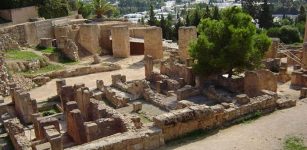 Carthage: Prosperous Phoenician Colony That Became Dominant Power In The Western Mediterranean
Featured Stories | May 21, 2020
Carthage: Prosperous Phoenician Colony That Became Dominant Power In The Western Mediterranean
Featured Stories | May 21, 2020 -
 Ancient Nanotechnology Knowledge Inspired A Modern 3D-Printable ‘Lycurgus Cup’
Ancient Technology | Mar 13, 2019
Ancient Nanotechnology Knowledge Inspired A Modern 3D-Printable ‘Lycurgus Cup’
Ancient Technology | Mar 13, 2019 -
 Red Paint On 1,000-Year-Old Gold Mask From Peru Contains Human Blood Proteins
Archaeology | Nov 1, 2021
Red Paint On 1,000-Year-Old Gold Mask From Peru Contains Human Blood Proteins
Archaeology | Nov 1, 2021 -
 Prehistoric Rock Art Discovered Near Kadiri, Andhra Pradesh, India
Archaeology | Dec 5, 2015
Prehistoric Rock Art Discovered Near Kadiri, Andhra Pradesh, India
Archaeology | Dec 5, 2015 -
 Treasure Of 1,753 Roman Silver Coins Accidentally Discovered In Poland
Archaeology | Apr 1, 2020
Treasure Of 1,753 Roman Silver Coins Accidentally Discovered In Poland
Archaeology | Apr 1, 2020 -
 Mystery Of The Ancient Moonless Ones – Strange Tales Of Unusual Lost Civilizations
Ancient Mysteries | Jan 29, 2022
Mystery Of The Ancient Moonless Ones – Strange Tales Of Unusual Lost Civilizations
Ancient Mysteries | Jan 29, 2022 -
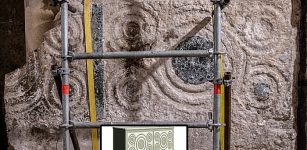 Graffiti Reveals Crusaders’ Beautiful Altar In The Church Of The Holy Sepulchre
Archaeology | Jul 24, 2024
Graffiti Reveals Crusaders’ Beautiful Altar In The Church Of The Holy Sepulchre
Archaeology | Jul 24, 2024 -
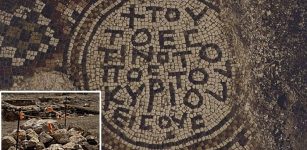 The 6th Century Byzantine Church Hidden Within Khirbet Tinshemet’s Woods – Discovered
Archaeology | Oct 2, 2024
The 6th Century Byzantine Church Hidden Within Khirbet Tinshemet’s Woods – Discovered
Archaeology | Oct 2, 2024 -
 Dracula: Cruel, Ruthless And Bloodthirsty Ruler But Not A Vampire
Featured Stories | Sep 12, 2023
Dracula: Cruel, Ruthless And Bloodthirsty Ruler But Not A Vampire
Featured Stories | Sep 12, 2023 -
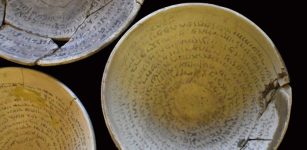 Ancient Magical Bowls Inscribed With Spells And Other Rare Artifacts Seized In Jerusalem Raid
Archaeology | Mar 14, 2022
Ancient Magical Bowls Inscribed With Spells And Other Rare Artifacts Seized In Jerusalem Raid
Archaeology | Mar 14, 2022 -
 Massive Menhir Champ Dolent Built By Fairies In Ancient Beliefs Of Brittany’s People
Featured Stories | Jan 13, 2025
Massive Menhir Champ Dolent Built By Fairies In Ancient Beliefs Of Brittany’s People
Featured Stories | Jan 13, 2025 -
 Why Did A Solar Eclipse Save George Davidson’s Life In Alaska?
Ancient History Facts | Aug 23, 2024
Why Did A Solar Eclipse Save George Davidson’s Life In Alaska?
Ancient History Facts | Aug 23, 2024 -
 Denisovan Family Tree: New Branches Revealed In Ancient DNA
Archaeology | Apr 12, 2019
Denisovan Family Tree: New Branches Revealed In Ancient DNA
Archaeology | Apr 12, 2019 -
 Mysterious Wise Pre-Flood Beings Who Gave Humans A Precious Gift – Did We Reject It?
Featured Stories | Mar 9, 2025
Mysterious Wise Pre-Flood Beings Who Gave Humans A Precious Gift – Did We Reject It?
Featured Stories | Mar 9, 2025 -
 Mysterious, Well-Preserved Ancient Foreign Mummies Found On Remote Islands In North America
Featured Stories | Jan 5, 2025
Mysterious, Well-Preserved Ancient Foreign Mummies Found On Remote Islands In North America
Featured Stories | Jan 5, 2025 -
 3,000-Year-Old Fortress Built By The Mysterious Votadini Tribe Discovered On Top Of Arthur’s Seat
Archaeology | Sep 11, 2020
3,000-Year-Old Fortress Built By The Mysterious Votadini Tribe Discovered On Top Of Arthur’s Seat
Archaeology | Sep 11, 2020 -
 Why Did King Solomon Hide Advanced Technology In A Secret Place? – The Great Deception – Part 2
Ancient Mysteries | Apr 3, 2021
Why Did King Solomon Hide Advanced Technology In A Secret Place? – The Great Deception – Part 2
Ancient Mysteries | Apr 3, 2021

